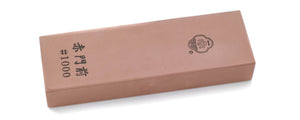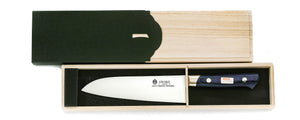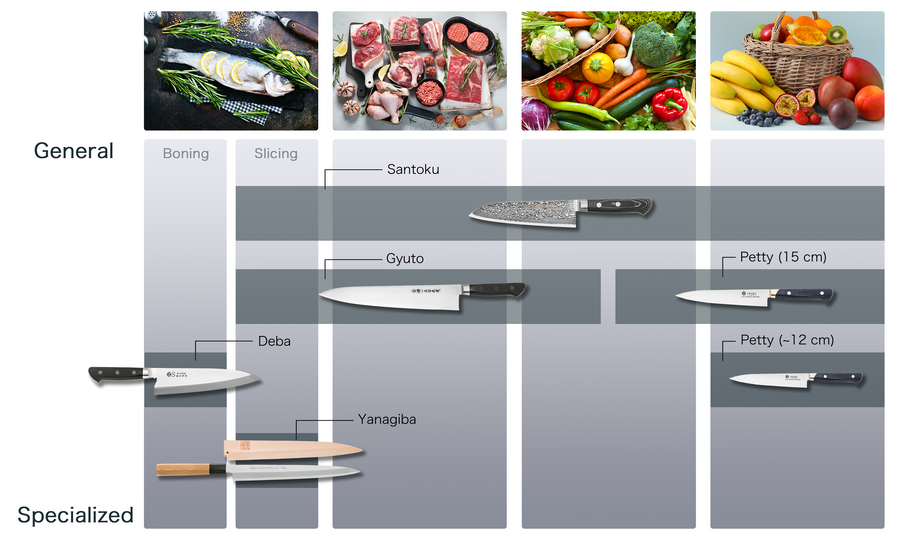
Features
- Multi-purpose Japanese Style Kitchen Knife
- Blade: White Steel #2; Standard Material for Carbon Steel Knife
| Product number | Actual Blade Length (mm) | Full Length (mm) | Total Weight (g) |
|---|---|---|---|
| 1b9sh-180 | 170 | 315 | 135 |
| Blade | Material Name | Handle |
|---|---|---|

Double Edged |
White Steel #2 | Octagonal Magnolia Wood Handle |

Wa-Santoku
A Wa-Santoku is typically used in households around Japan. Unlike the standard Santoku, the Wa-Santoku has a traditional Japanese handle which shifts the balance point slightly,allowing more nimble cutting.
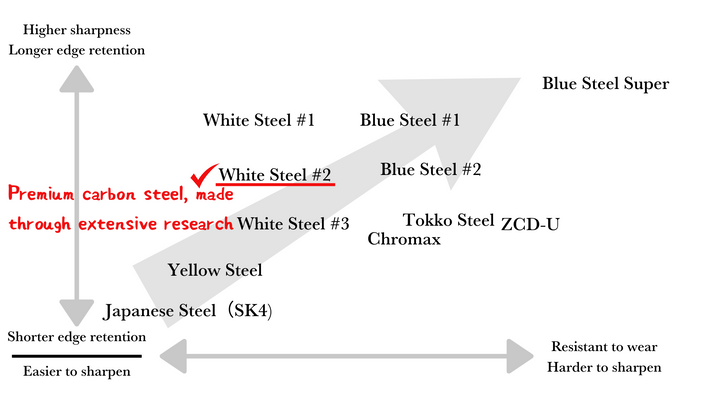
White Steel #2
A highly pure carbon steel, being easy to sharpen while staying cost-effective. Highly recommended as the best steel for your first professional quality knife.
Carbon Steel
White Steel #2 is the benchmark carbon steel for Japanese kitchen knives. White Steel #2 knives are widely used by chefs who specialise in Japanese cuisine, more so than other carbon steels. This steel has very few impurities, making the knife both easy to sharpen and less expensive due to the non-inclusion of rare metals.
*NOTE: Carbon Steel is susceptible to rust if it is not properly cared for. Please clean and dry the blade regularly during use and after use.
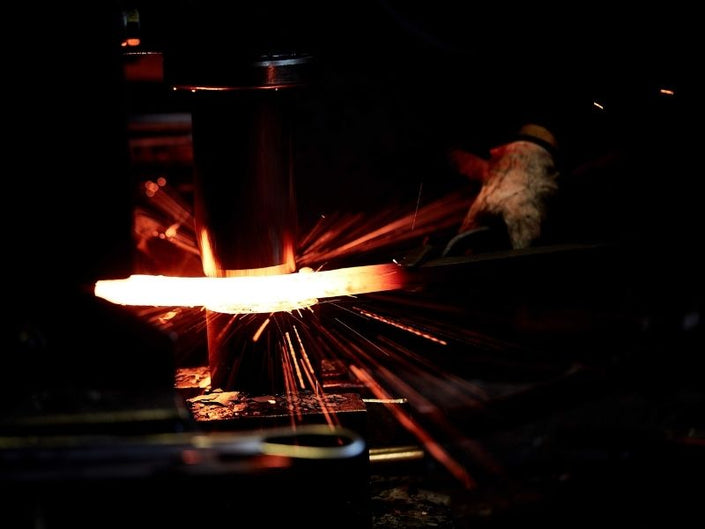
Forge Welded
Forge Welded knives undergo a forging process where steel is heated to high temperatures and then shaped with a hammer. This carefully done process changes the internal structure of the steel, producing a blade with superior hardness levels. Highly skilled craftspeople forge, quench, and create the knife's cutting edge by hand, resulting in a sharp blade with long edge retention.

Optional Engraving
Optional Engraving Service
Sakai Ichimonji provides complimentary engraving using either Japanese Kanji or English Alphabet. Please specify your preference. For details, please visit here
A knife store that has supported the history of knives and food culture in Japan.
It has been 600 years since the birth of swordmaking in the Sakai region of Japan. Sakai Ichimonji Mitsuhide's and it's craftsmen continue to build on that legacy by producing the finest blades in Japan.
This is where the culture of completing a dish of sashimi by "just cutting" and the culture of expressing sharpness as "taste" was born.
For 70 years, we have been connecting the spirit of Sakai's craftsmen with the passion of chefs in Osaka's kitchen equipment shopping district, known as the kitchen of Japan.
We are very happy that our knives can be used by people all over the world.



























